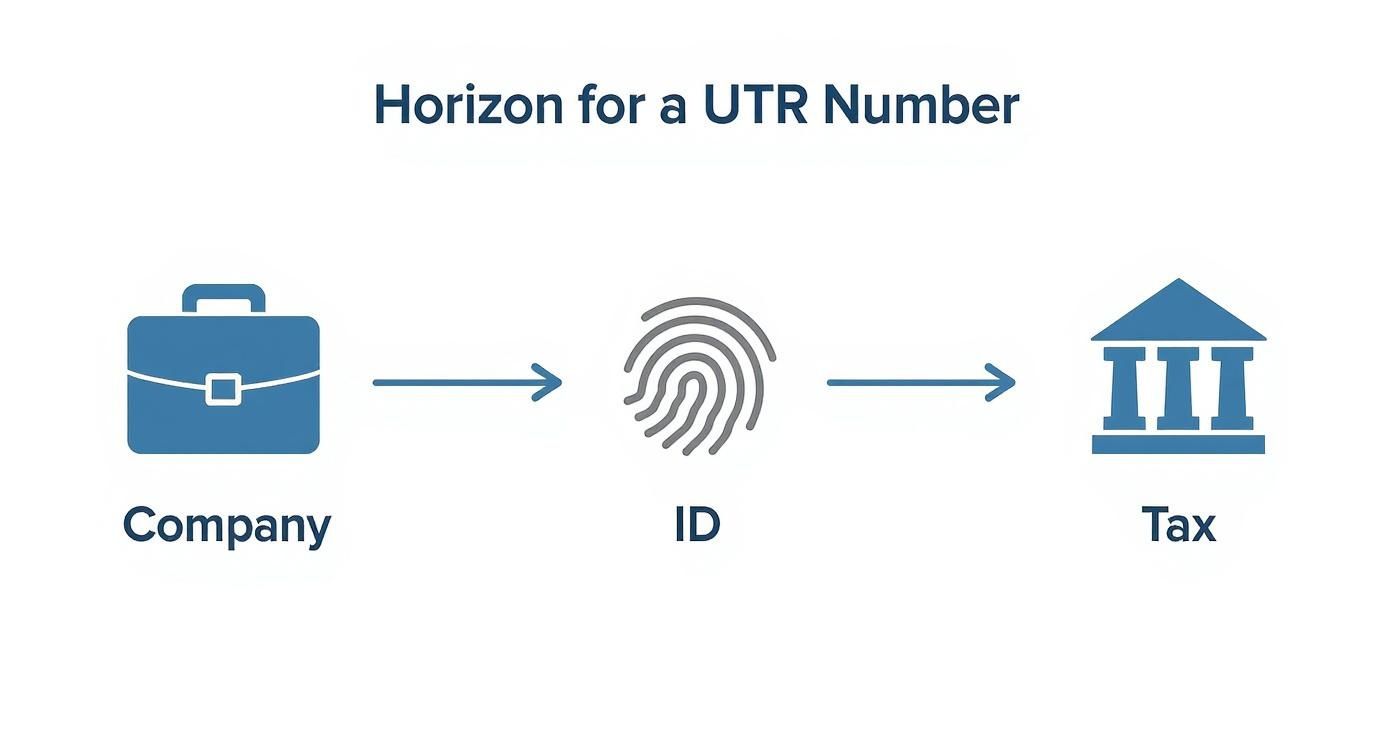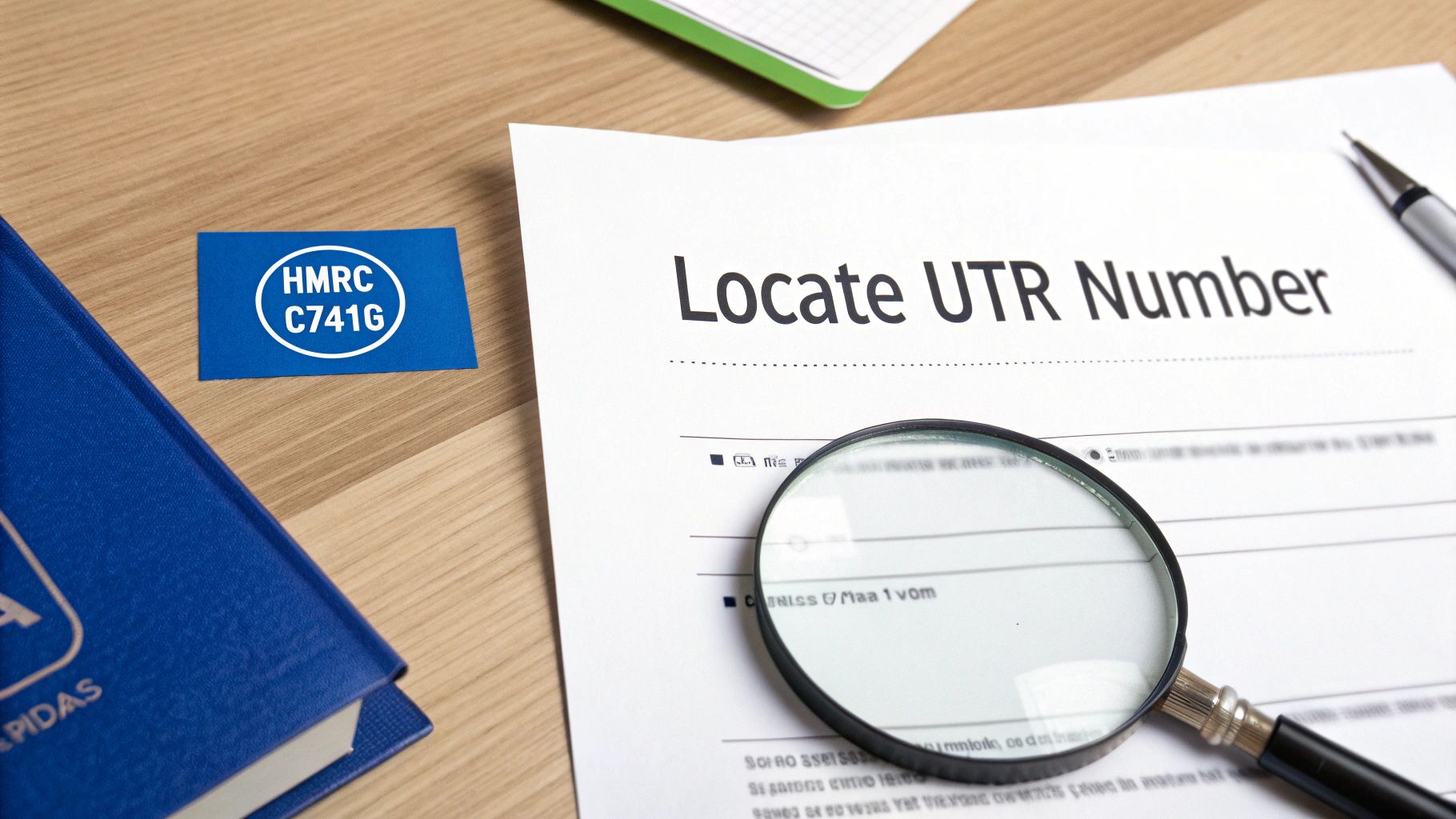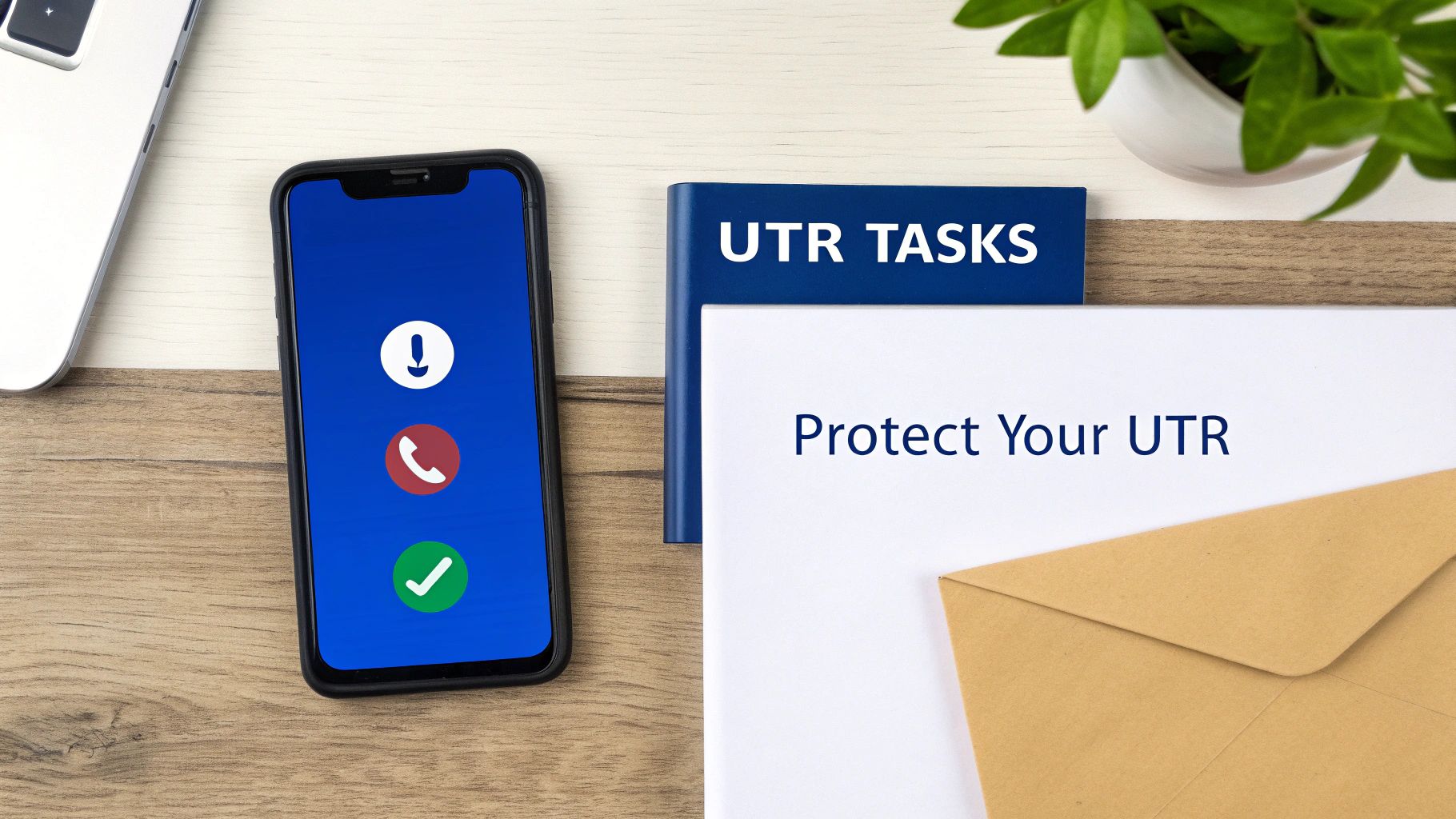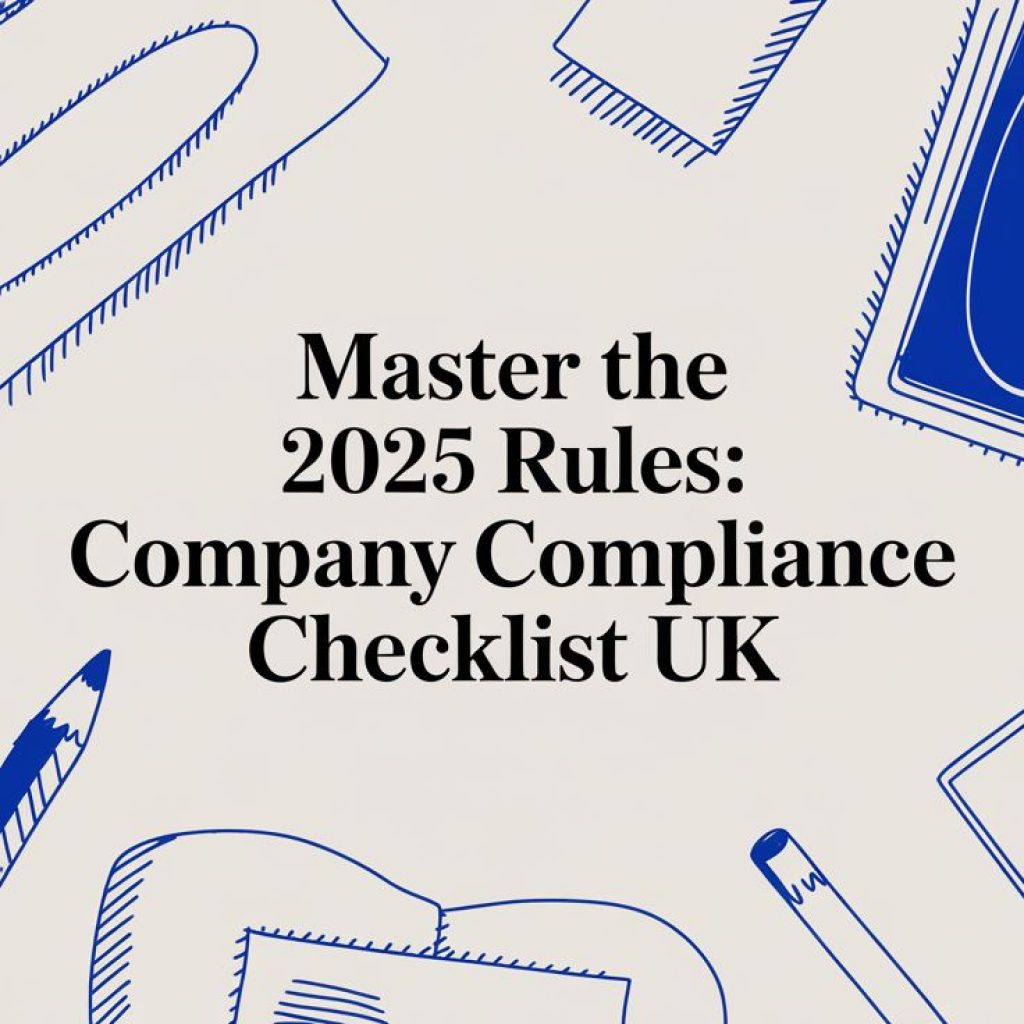Company Unique Tax Reference Number
Your Guide to the company unique tax reference number – Think of your company’s Unique Tax Reference (UTR) number as its financial fingerprint. It’s a 10-digit code issued by HM Revenue and Customs (HMRC) the moment your limited company is registered for Corporation Tax, and it’s the key to everything tax-related. Without it, your business simply can’t meet its legal tax obligations in the UK.
What Is a Company UTR Number?
Just like you have a National Insurance number for your personal tax, your limited company gets a UTR for its own financial life. It’s a unique identifier that HMRC uses to track your company’s Corporation Tax from the day it’s formed until the day it’s dissolved. This number never changes.
So, why is it so important? It all comes down to accuracy. When you file your Company Tax Return (the CT600 form) or pay your Corporation Tax bill, the UTR ensures everything lands in the right place. It prevents mix-ups, like payments going astray or returns getting lost in the system, which could otherwise lead to some nasty penalties and compliance headaches.
The Role of the UTR in Business Compliance
Your UTR isn’t just another piece of admin. It’s the cornerstone of your company’s relationship with HMRC and unlocks every interaction you’ll have about Corporation Tax.
Here’s a breakdown of why it’s absolutely essential:
- Filing Tax Returns: You literally cannot submit your annual Company Tax Return (CT600) without a valid UTR. Practical Example: When your accountant uses software to file your CT600, the UTR field is mandatory. Without it, the submission to HMRC’s gateway will be rejected instantly.
- Making Payments: Every single Corporation Tax payment you make must be tagged with your UTR. This is how HMRC knows the money came from you. Actionable Insight: Always use your 17-character Corporation Tax payment reference number for payments, which includes your 10-digit UTR. This ensures your payment is allocated correctly and promptly.
- Official Correspondence: Any letters, notices, or communications from HMRC will use your UTR to identify your company.
- Authorising Agents: If you hire an accountant to handle your taxes, they’ll need your UTR to speak to HMRC on your behalf.
In short, it’s a non-negotiable part of running a UK business. With over 4.3 million limited companies registered in the UK as of 2023, each with its own UTR, you can see how central it is to the entire business framework. You can explore more about UTR numbers and their importance on Wallester.com.
How to Get Your Company UTR Number
Once you’ve incorporated your business, getting your company’s Unique Tax Reference number is the next critical step. You don’t apply for a UTR in the same way you might for a driving licence; instead, HMRC automatically generates one for you when you register your limited company for Corporation Tax.
This registration is a legal must-do, and you have to get it done within three months of your company starting any business activity. “Business activity” is a broad term – it could be anything from making your first sale and buying stock to advertising, renting a property, or hiring your first employee. Putting this off can lead to penalties, so it’s a task you’ll want to tick off your list as soon as your company is officially up and running.
The Online Registration Process
The quickest and most direct route to getting your UTR is to register for Corporation Tax online using the Government Gateway. You’ll need a Government Gateway user ID and password. If you don’t have one already, don’t worry – you can easily create one as you start the registration.
To make the process as smooth as possible, have a few key details about your business handy before you begin.
- Your Company Registration Number (CRN): This is the unique 8-character code you were given by Companies House when your company was formed.
- The date your company started business activities: This is the official start date for your company’s accounting period. Practical Example: If you registered your company on 1st March but didn’t buy any equipment or open a business bank account until 15th April, your start date for Corporation Tax is 15th April.
- Your company’s primary address: This must match the registered office address on record with Companies House.
Once you’ve submitted all the information, HMRC takes over. Unlike many digital processes that end with an instant email, the UTR itself arrives the old-fashioned way: through the post.
Your company’s very first UTR will be sent in a letter from HMRC, often with the reference ‘CT41G’ at the top. This piece of paper is incredibly important – it’s the official confirmation of your company’s tax identity, so keep it somewhere safe.
This infographic breaks down the simple journey from company formation to receiving your tax ID.

As you can see, registering for Corporation Tax is the essential bridge between setting up your company and being officially recognised by HMRC for all things tax-related.
Managing Timelines and Expectations
After you’ve hit ‘submit’ on your online registration, it’s time to play the waiting game. HMRC will process your application and then post the letter containing your 10-digit UTR directly to your company’s registered office address. This usually takes about 14 to 21 days, but it can stretch a bit longer during particularly busy times of the year. It’s absolutely crucial that your registered address is set up to reliably receive and handle mail.
While sorting out the company UTR is all about Corporation Tax, remember that as a director, you likely have your own personal tax obligations too. If you need help with that, you can register for Self Assessment tax with our clear guide. It’s a separate process but just as important for staying on the right side of the taxman.
Locating Your Company UTR Number
It’s a heart-sinking moment for any business owner: you need your Company UTR number, and it’s nowhere to be found. Misplacing it can feel like a major setback, but thankfully, finding it is usually a straightforward process.
Because it’s such a critical piece of information for all your tax activities, HMRC puts it on almost all official communications. It’s just a matter of knowing where to look.

The very first place you should check is the original letter HMRC sent you right after you registered for Corporation Tax. This document is officially titled ‘CT41G – Corporation Tax – new company details’ and it’s the debut of your 10-digit UTR. Think of it as the birth certificate for your company’s tax life—definitely one to keep in a safe place.
But if you can’t put your hands on that specific letter, don’t panic. Your UTR is printed on pretty much any other tax-related letter HMRC has sent to your company’s registered office.
Checking Other HMRC Documents
HMRC uses your UTR to identify your business in every interaction, so it appears on a variety of standard documents. Before you think about picking up the phone, have a quick sift through your files for any of the following:
- Notices to Deliver a Company Tax Return: This is the official nudge to file your annual CT600. Your UTR will be clearly displayed, usually right at the top of the first page.
- Payment Reminders: If you’ve received any letters about upcoming or overdue Corporation Tax payments, your UTR will be on them.
- Statements of Account: These summaries of your company’s tax position will always feature your UTR for reference.
- Previous Tax Returns: If you’ve filed a Company Tax Return before, the UTR will be on your copy of the forms.
Finding Your UTR Online or by Phone
If you’re managing your tax affairs digitally, your online account is often the fastest way to find what you need. Just log in to your company’s HMRC online business tax account, and you should be able to spot your Corporation Tax UTR in the account details section.
When all else fails, you can contact HMRC directly by phone. You’ll need to have some key company details ready to pass their security checks and prove you’re authorised to ask for the information.
Practical Tip: Before you call HMRC, make sure you have your Company Registration Number (CRN), your company’s registered address, and your director details to hand. This will speed up the verification process significantly and help them find your company’s Unique Tax Reference number without any fuss.
Request UTR Reminder Online – If you’ve misplaced your UTR number you can request a reminder by visiting https://www.tax.service.gov.uk/ask-for-copy-of-your-corporation-tax-utr TOP TIP Do this now! A UTR reminder can take up to 15 working days to be received. Waiting until the last minute to request a reminder can cause filing issues resulting in fines and penalties.
Why Your Company UTR Is So Important
Your company’s Unique Tax Reference number is far more than just a 10-digit code on a letter from HMRC. Think of it as the single most important identifier for your business in the eyes of the taxman. It’s the master key that unlocks your entire relationship with HMRC, linking every tax-related action you take and keeping your business compliant.
Without a UTR, your company is effectively invisible to the UK’s Corporation Tax system. You simply cannot fulfil your most basic legal duties, like filing your annual Company Tax Return (CT600) or paying your tax bill. Every single interaction, from a quick phone query to a formal submission, starts with this number.
HMRC uses this identifier, and only this identifier, to correctly allocate your payments. A simple mistake—like using the wrong number or forgetting it entirely—can cause a world of pain. Your payment could get lost in the system, triggering automated penalty notices for a debt you’ve already settled.
The UTR’s Role in Core Business Functions
The importance of your company UTR goes way beyond just the annual tax return. It’s a foundational piece of information you’ll need for other mandatory government schemes as your business grows.
Here are just a few essential functions that are impossible without your company’s UTR:
- Filing the CT600: This is the big one. Your UTR is required on the form itself, directly linking your financial data to your company’s tax record. No UTR, no filing.
- Paying Corporation Tax: Whether you pay online or via another method, your UTR must be used as the payment reference. Without it, HMRC won’t know the money is from you.
- VAT Registration: When you register for Value Added Tax (VAT), HMRC will often cross-reference your business details, including its UTR, to verify your company’s identity.
- Construction Industry Scheme (CIS): If you operate in the construction sector, you have to register for CIS. This process requires a valid UTR to handle payments to subcontractors correctly.
Your UTR is the linchpin of your company’s financial integrity. Getting it right ensures your tax payments and any potential refunds are processed accurately, helping you avoid delays and serious compliance headaches that can stall your business.
The Consequences of an Incorrect UTR
The entire UK tax system is built on these unique identifiers. A UTR links every tax return to the right business, which is critical for preventing both genuine errors and outright fraud. Its importance is massive; in 2022 alone, HMRC blocked around £1.9 billion in fraudulent claims, many of which involved dodgy or stolen UTRs. For a deeper dive, you can discover more insights about tax compliance at Real Business.
For your business, mixing up your UTR can be a nightmare. A misallocated payment can trigger a cascade of problems: false arrears notices, late payment penalties, and a damaged compliance history with HMRC. It’s a stressful and time-consuming mess to sort out.
Comparing Your Company UTR to Other Business Numbers
When you first launch a business, it can feel like you’re drowning in a sea of acronyms and official numbers. It’s incredibly easy for new founders to get mixed up, but figuring out the role of each identifier is essential for keeping things running smoothly and staying on the right side of the law.
Your company Unique Tax Reference number is purely for dealing with HMRC about Corporation Tax. Think of it as the dedicated phone number connecting your business directly to the taxman. But it’s just one piece of the puzzle; you’ll quickly collect several other numbers, and each one has a completely different job.
The Alphabet Soup of Business IDs
Imagine these numbers are different forms of ID for specific places. You wouldn’t try to get into a members-only gym with your driving licence, and you can’t use your Company Registration Number to file your tax return. Each one has its own specific purpose.
Getting them confused can lead to rejected filings, payments going astray, and a whole lot of unnecessary stress. Practical Example: If you accidentally use your 8-digit CRN as the reference when paying Corporation Tax instead of your 10-digit UTR, HMRC’s automated system won’t recognise it. The payment will sit in a holding account, unallocated, and you’ll likely receive a penalty notice for non-payment, even though you sent the funds.
Distinguishing between your UTR, CRN, and VRN isn’t just a tick-box exercise—it’s fundamental to your company’s legal and financial health. Using the right number in the right context ensures your filings are accepted, your payments are credited properly, and your business stays in good standing with both Companies House and HMRC.
To cut through the confusion, let’s lay out the main business numbers you’ll be working with.
UK Business Identification Numbers Explained
Here’s a straightforward breakdown of the most common registration numbers a UK business will have, what they’re for, and who issues them.
| Identifier | Issuing Body | Format | Primary Purpose |
|---|---|---|---|
| Company UTR | HMRC | 10 digits | Managing all aspects of Corporation Tax, including filing returns (CT600) and making payments. |
| Company Registration Number (CRN) | Companies House | 8 numbers, or 2 letters followed by 6 numbers | Legally identifying your incorporated company on the official public register. Used for all Companies House filings. |
| VAT Registration Number (VRN) | HMRC | 9 digits, sometimes prefixed with ‘GB’ | Identifying your business for Value Added Tax (VAT) purposes. It’s used on invoices and for VAT returns. |
| Personal UTR | HMRC | 10 digits | Managing your personal tax affairs via Self Assessment. This is separate from your company’s UTR. |
So, while the company UTR is your key to the world of tax, the CRN is like your company’s birth certificate—it proves it legally exists. If you want to get a better handle on this number, you can learn more about what the CRN number is in our detailed guide.
Getting comfortable with using each of these numbers correctly is a simple but powerful first step toward building a compliant and well-organised business.
Avoiding Common UTR Problems
Managing your company’s Unique Tax Reference number is usually a straightforward affair, but a few common issues can trip up even the most organised founders. Knowing what these potential pitfalls are ahead of time means you can take simple steps to keep your tax affairs running smoothly, saving yourself a world of stress down the line.
The most frequent headache for new companies is the initial UTR letter simply not showing up. After you register for Corporation Tax, you should receive this vital document within about three weeks. If it doesn’t arrive, don’t just sit back and hope for the best. It often points to a problem with your registered office address or a delay in HMRC’s processing.

Likewise, if you ever lose your UTR or suspect it’s fallen into the wrong hands, you need to act fast. A lost UTR can hold up tax filings and cause chaos with deadlines. A stolen one is even worse—it could be used for identity fraud, creating a serious security risk for your business.
Proactive Steps for a Hassle-Free UTR
Keeping your details up to date is the single best thing you can do to avoid UTR-related trouble. It’s amazing how a simple administrative slip-up can have such a big knock-on effect, causing official mail to go missing and deadlines to fly by unnoticed.
Here are a few practical tips to stay one step ahead:
- Keep Your Address Updated: If you change your company’s registered office address, you must tell both Companies House and HMRC right away. Just updating one isn’t enough, as they keep separate records for this sort of thing.
- Chase Up a Delayed Letter: Has it been a month since you registered for Corporation Tax and still no UTR letter? It’s time to contact HMRC directly. This lets you check on the status and fix any address issues before they snowball.
- Guard Your UTR: Treat your company unique tax reference number like you would your bank details. Actionable Insight: When sharing your UTR with a trusted professional like an accountant, use a secure method rather than a standard email. Be incredibly wary of any unsolicited emails or unexpected phone calls asking for it. Fraudsters are always trying new tricks, and you can learn more about what to look out for in our guide on scam HMRC letters.
Authorising an Accountant to Help
Let’s be honest, for many founders, the admin burden of dealing with tax communications is a major distraction from actually growing the business. One of the smartest moves you can make is to formally authorise an accountant or tax agent to handle HMRC on your behalf.
Authorising an agent gives a trusted professional permission to handle your Corporation Tax filings, speak to HMRC directly about your account, and manage correspondence. This not only minimises the risk of errors but also frees you up to focus on what you do best.
The process itself is simple and is usually done through your HMRC online account or by filling out a form (the 64-8). Once they’re authorised, your accountant becomes the main point of contact, making sure queries are handled properly and deadlines are always met. This one small step can transform tax compliance from a source of anxiety into just another well-managed part of your business operations.
Your Company UTR Questions, Answered
Navigating the paperwork of a new UK business can feel like learning a new language. To help clear things up, here are answers to the most common questions founders ask about their company’s Unique Tax Reference number.
Do Company Directors Need a Personal UTR Too?
Yes, absolutely. This is a point that often trips people up. Your limited company is a separate legal entity, and so is its tax profile.
Your company UTR is strictly for Corporation Tax. Your personal UTR, on the other hand, is for your individual Self Assessment tax return, where you’ll declare income like your salary and any dividends you take from the company. You will almost certainly need both.
Can a Company Have More Than One UTR?
No, never. A company is assigned just one UTR for its entire lifetime. This 10-digit number is its permanent tax identifier with HMRC, staying the same from the day it’s issued right through to the day the company is dissolved.
Is My Company UTR the Same as My CRN?
They are completely different, and it’s vital not to mix them up. Your Company Registration Number (CRN) is issued by Companies House when your business is incorporated, acting as its official ID on the public register. Your UTR is issued later by HMRC, specifically for managing your tax affairs.
A simple way to think about it: your CRN is your company’s birth certificate, proving it legally exists. Your UTR is its tax ID, used for all financial dealings with HMRC. You need both, but they serve entirely different functions.
How Long Does It Take to Get a UTR After Registering?
Once you’ve registered your new company for Corporation Tax online, HMRC will post the UTR to your company’s registered office address. This usually takes between 14 and 21 days. If you’re past the three-week mark and still haven’t received it, it’s a good idea to give HMRC a call to see what’s holding it up.
What Should I Do If I’ve Lost My Company UTR?
Don’t panic—it happens. First, check any old correspondence you’ve had from HMRC, as it’s printed on most official letters. You can also find it by logging into your company’s online business tax account. If you still can’t track it down, you’ll need to call HMRC directly.
If you believe your UTR has been stolen, you must contact HMRC immediately. This is crucial for reporting potential identity fraud and protecting your business from any unauthorised activity.
Staying on top of compliance is a cornerstone of building a lasting business. At Acorn Business Solutions, we offer a full suite of services—from company formations and registered office addresses to mail handling—to make your journey smoother. Let us handle the admin so you can focus on what you do best: growing your business. https://acornbusinesssolutions.com






